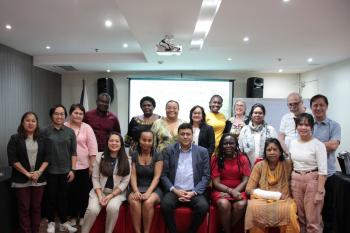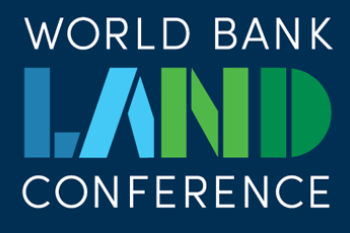Progress in Land Indicators
This post was originally published here on the UNCCD Science to Policy Weblog on 10/07/2018. The UNCCD weblog is designed for scientists, experts, practitioners, policy-makers and journalists to share their insights, expertise and ideas with other UNCCD stakeholders. It is also a means for the UNCCD to reach out to the general public and promote specific issues of interest in an understandable way. Publication of the content does not necessarily mean an endorsement of the piece but rather a facilitation of an exchange of diverse and critical perspectives that promote learning.
This July is the first time the United Nations will review the progress made towards meeting Sustainable Development Goal 15, which is about Life on Land. Each goal will be reviewed about every 4 years until 2030. The reviews will be based on the 10 indicators countries agreed on, that assess change in each country over time. Two important developments relating to the indicator on land degradation neutrality (15.3.1) have occurred, since its adoption in 2015. First, the indicator for achieving land degradation neutrality has been refined. It is now both comparable over time in each country and across countries. The UN Convention to Combat Desertification (UNCCD) is the custodian agency of the LDN indicator. Second, some of the other SDG indicators, for instance on land tenure rights are also now well developed to enable the stakeholders of the UNCCD to examine, compare and understand why progress to achieve Land Degradation Neutrality (LDN) might be faster, slower or not happening in some countries and not in others.
Progress in refining the indicators
In November 2017, the indicator on achieving land degradation neutrality (15.3.1) acquired Tier II Status. For SDG indicators, Tier II means that the indicator is now conceptually clear and there is an accepted, standardized method to measure it in the same way in all countries. The shortcoming of a Tier II indicator is not just in the quantity and quality of data itself, but that governments do not collect it regularly. This is expected of any newly developed indicator. However, the indicator can move to Tier I, the highest and best statistical status, when 50% of the UN member countries - that is 96 countries – submit data for the indicator regularly.For 15.3.1, this status is easily achievable at the next SDG review cycle for SDG15 as UNCCD parties will have a regular 4-year reporting cycle for submitting data on 15.3.1, and can use this indicator to assess progress against the Target.
Working with the Global Land Indicators Initiative (GLII)
In most countries, land degradation is delinked from land governance issues and policies. But by drawing on progress in other SDG indicators, the UNCCD can strengthen these links. The work on monitoring land tenure security, which is in progress under the Global Land Indicators Initiative (GLII) hosted and facilitated by the Global Land Tool Network (GLTN) at UN-Habitat, is a good example. GLII is a global consultative process that brings together several organizations that include inter-governmental organizations, National Statistical Organisations, geospatial organisations, regional and global data agencies, civil society organizations, the private sector, donors and UN agencies. During the last two years, GLII supported the work of the custodian agencies responsible for monitoring tenure security indicators in the SDGs that relate to poverty (1.4.2) and gender equality (5.a.1 and 5.a.2).More specifically, GLII provided technical input and convened multi-stakeholders sessions when the methodology for measuring tenure security indicator 1.4.2 was developed jointly by its custodian agencies, UN-Habitat and World Bank.GLII also facilitated the harmonization of indicator 5.a.1, which measures women’s ownership and access to agricultural land, and indicator 1.4.2, on tenure rights. During this process a joint survey questionnaire module was developed. The National Statistical Organizations and other country-level data agencies will use this module in future to collect data on these two indicators. This approach is expected to strengthen complementarity and synergies among agencies during data collection. In addition, GLII provided technical input in the development of indicator 5.a.2, which measures the extent to which legal frameworks - including customary law - secure women’s land rights at national level. The Food and Agriculture Organization of the United Nations (FAO) is the custodian of indicator 5.a.1 and 5.a.2. When developing the land tenure indicators, GLII took into account the importance of the Land Degradation Neutrality indicator 15.3.1 in order to ensure the data gathered on tenure rights can be triangulated with that on land degradation to show trends and related outcomes in rural and urban contexts. GLII has a broader set of globally comparable and nationally applicable land indicators that the Convention can use in its analyses. GLII is supporting custodian agencies to monitor the other land related indicators linked to food security under SDG2, urban development (SDG11) and on peace and stability (SDG16).


